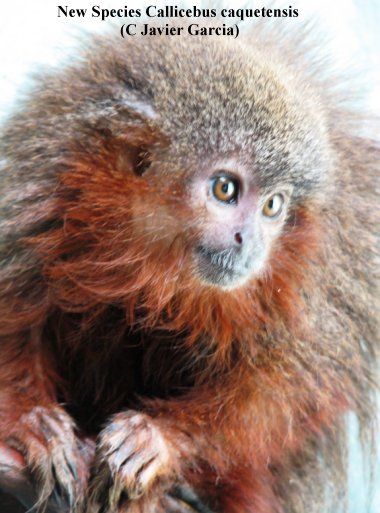These were the words of a leading scientist, as he unveiled dozens of new species to a watching world last year. A purring monkey, a vegetarian piranha and a colourful lizard, too shy to fight, were among the latest discoveries of rare and endangered species, according to the World Wildlife Fund (WWF).
Last year the Amazonian rainforest and a hitherto unexplored mountain forest in Mozambique called Mount Mabu revealed to botanists and zoologists dozens of rare species of flora and fauna never seen before.
According to the WWF, expeditions over the past three years to catalogue plant and animal life in the furthest stretches of the Amazon brought news of the discovery of 258 plant, 84 fish, 58 amphibian, 22 reptile, 18 bird and one mammal species, not to mention countless invertebrates and other insects.
Damian Fleming, head of programmes for Brazil and the Amazon at WWF-UK, said, ‘With an average of two new species identified every week for the past four years, it’s clear that the extraordinary Amazon remains one of the most important centres of global biodiversity’.

Mount Mabu
Meanwhile, other teams of explorers, including a camera crew from Google, were trekking deep into the jungle to discover what Mount Mabu could reveal.
A film released at the end of 2013 by Google, called The lost forest of Mt Mabu, showed how the forest had been unknown to any except local villagers until 2005, when scientists exploring Malawi’s mountains noticed a patch of forest on the opposite side of the mountain range.
Using Google Earth maps, they discovered a potential conservation site not yet charted on any map, and so a team from London’s Kew Botanical Gardens was among the first of many to investigate.
Led by Dr Julian Bayliss, a conservation biologist for Kew Gardens who has been looking for potential ‘green spots’ in Africa, the team brought back more than 500 plant specimens.
According to a report in The Guardian, the team found thousands of tropical plant species, saw rare blue duiker antelope, Samango monkeys, elephant shrews, and almost 200 different types of butterflies. Many of these species are new to science and are still being chronicled.
Diversity
The age of long voyages of discovery is over and the age of new technology has brought to us quicker ways of revealing these hidden treasures to mankind.
A simple Google Earth mapping system can reveal swathes of uncharted forest, and digital cameras and high-tech equipment can record the rarest of living beings without removing them from their natural habitat.
And, as science discovers more about God’s world, it also discovers how much there is still to learn, and how rich and diverse the creation it tries to understand.
In the 2013 film, Dr Bayliss said, ‘When you enter into a forest, everything changes. Life is buzzing all around you. You’re always asking questions. As soon as you think you have the answers, then new questions, new doors open’.
Science has been called ‘thinking God’s thoughts’ after him. Every new species discovered reminds us, not of that intrusive, mythological deity called ‘evolution’, but of the Lord God, whose creative intelligence and wisdom are unrivalled.
‘You are worthy, our Lord and God, to receive glory and honour and power, for you created all things, and by your will they were created and have their being’ (Revelation 4:11).
Stewardship
The glory of the beauty of the untouched woods (to paraphrase Edward Thomas) should cause us to praise our God. It should also serve as a warning to steward the Earth carefully.
The recently discovered purring Titi Monkey of the Amazon is already in danger of becoming extinct. Dr Fleming said, ‘These same habitats are also under growing threat. The discovery of these new species reaffirms the importance of stepping-up commitments to conserve and sustainably manage the unique biodiversity, and also the goods and services provided by the rainforests to the people and businesses of the region’.
The same technology that helped Dr Bayliss discover the forest on Mount Mabu has also chronicled accurately the deforestation that is swallowing up the Amazonian forest.
In November, the first high-resolution, global map of forest resources was revealed by international researchers, including those from the University of Maryland.
Using 650,000 satellite images taken by Landsat 7, they have charted the changing face of the world’s forests from 2000 to 2012. In that time, the Earth has lost, overall, enough trees to cover the UK several times.

Value
Quoted in the Science journal, Daniel Zarin, of the Climate and Land Use Alliance, said, ‘This new monitoring approach can provide, on a global scale, transparent accountability for monitoring progress toward achieving real declines in deforestation’.
Just as we value and preserve works of art from the world’s greatest artists, so we should value each ‘work of art’ that came, in its first expression, from the hand of the Supreme Creator (Genesis 1).
This world is the arena of both God’s common and redemptive grace, and, in his wisdom, he has chosen to ‘give drink to every beast of the field and causes the grass to grow for the cattle and vegetation for the service of man’ (Psalm 104:11,14).
Let us steward it all for his glory and the blessing of mankind!




